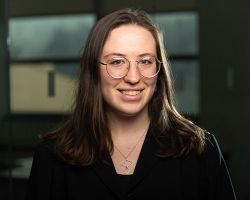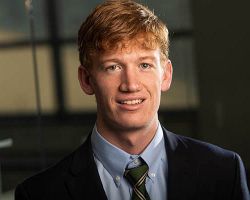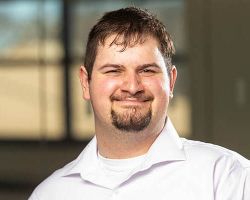Students: Kaelyn Gormley, Shane McCarthy & John Rybnik
Project: Microbial Enhanced Phosphorus Recovery from Wastewater Solids for MAP Production
Poster: Vertical (PDF) | Horizontal (PDF)
Institution: Lafayette College
Major: Civil and Environmental Engineering
Advisor: Art Kney
Abstract
Phosphorus ore is a raw material that is considered crucial to the global economy, and currently these mineable sources of phosphorus are being depleted. Our previous years’ research identified and developed a fertilizer production technique that precipitates out a compound composed of magnesium, ammonium, and phosphorus, or MAP from wastewater centrate. Our current research seeks to develop biological techniques to solubilize phosphorus from digester biosolids to enhance the production of MAP or another phosphorus rich fertilizer. Typically, digester biosolids are incinerated and/or sent to a landfill despite being nutrient rich. This technology establishes a sustainable system that would continuously recycle and recover phosphorus and nitrogen from wastewater. While sustainable management of nutrient cycles has been extensively studied in recent years, we have added unique aspects in our research. Most nutrient extraction processes apply their technology within the water-treatment train, however this process focuses on production within the solids-treatment train. Our research considers the application of our biosolubilization process before the biosolids begin dewatering in the solids-treatment train to maximize potential phosphorus availability. Another unique aspect of this research is using phosphorus-solubilizing bacteria to organically bolster the concentration of phosphorus, a limiting reactant in the MAP fertilizer production process. Preliminary benchtop tests demonstrate that our process can increase soluble phosphorus concentration by anywhere between two and six times. Once treated, the biosolids would pass through the dewatering process, at which point we envision employing our MAP or other extraction technology. Conditions that are evaluated to optimize this process are temperature, time of incubation, biosolid dosage, method of bacteria preculture, and strain of bio-solubilizing bacteria. Aspects of both our biotechnology and MAP extraction technology are reviewed.

About Kaelyn Gormley
Coming Soon

About Shane McCarthy
Shane McCarthy, senior in Civil Engineering with a minor in Environmental Science from Portsmouth, RI. Under the guidance of Professor Arthur Kney, Shane and two other students have been developing a method that uses bacteria to bio-solubilize phosphorus from wastewater biosolids to enhance production of MAP or another phosphorus-rich fertilizer allowing for more sustainable management of nutrient cycles. Shane has also worked the past three summers on the Tongass National Forest in Southeast Alaska, initially building hiking trails with AmeriCorps, and then working for the engineering division of the US Forest Service. He plans to return to work for the US Forest Service after graduating.

About John Rybnik
John Rybnik, junior studying Civil Engineering from Drexel Hill, Pennsylvania. I am performing research with Professor Kney . This project interested me because it allowed me to obtain lab experience, I have interests in structural and geotechnical engineering and will probably pursue one of these fields in the future. I have cerebral palsy, a disability that causes me to face unique challenges, both in and outside of school. Outside of school activities, I like to watch and play sports, primarily baseball and basketball.
